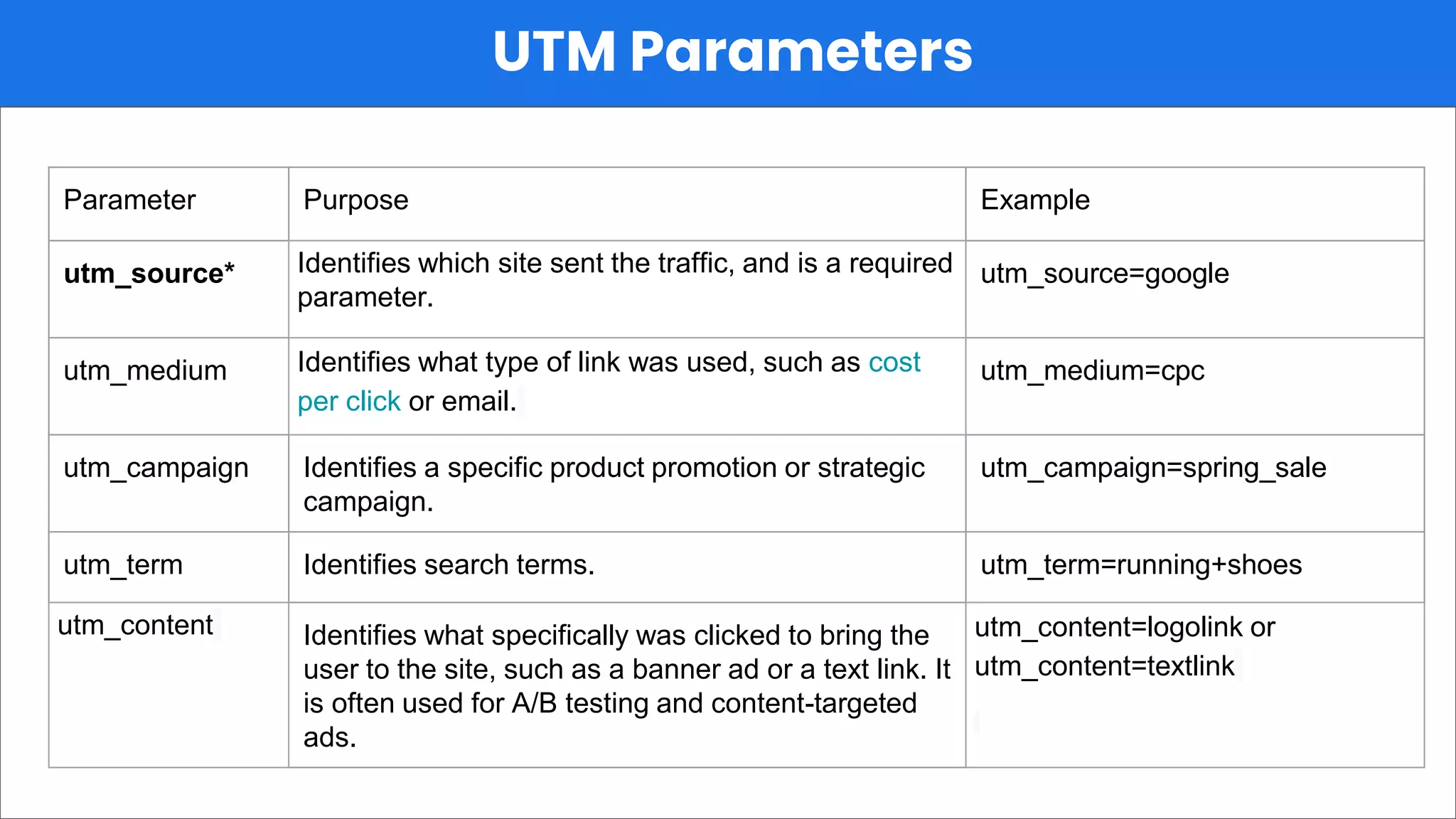You can use UTM parameters for A/B testing and content differentiation by assigning unique UTM values to different versions of your ads, emails, or landing pages. This allows you to track which variation performs better in analytics tools like Google Analytics.
Key steps and best practices include:
-
Use utm_content to differentiate A/B test variations within the same campaign, such as different ad creatives, email links, or landing page versions. For example, utm_content=versionA vs. utm_content=versionB helps identify which content drives more conversions.
-
Assign distinct UTM parameters for each test variable. You can vary utm_source, utm_medium, utm_campaign, and utm_content depending on what you want to test. For example, utm_campaign can identify the overall campaign, while utm_content specifies the A/B test variant.
-
Implement JavaScript on your landing pages to dynamically show or hide content based on UTM values. This approach lets you serve different page versions to visitors depending on the UTM parameters in the URL, enabling A/B testing without specialized tools.
-
Maintain consistent naming conventions and lowercase formatting to ensure accurate tracking and avoid data fragmentation.
-
Test your UTM-tagged URLs before launching campaigns to confirm parameters persist and are correctly captured by analytics.
-
Analyze performance by comparing metrics like click-through rates, conversions, and engagement for each UTM variation. This data-driven approach helps optimize campaigns and content based on real user behavior rather than assumptions.
In summary, by carefully structuring your UTM parameters—especially utm_content for content variants—and using them to segment traffic in your analytics, you can effectively run A/B tests and differentiate content performance across channels and campaigns.





